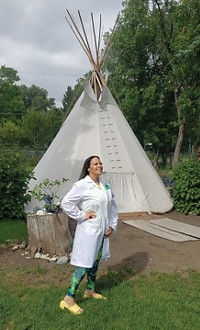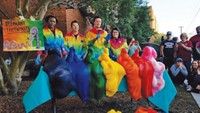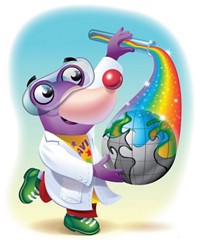Advertisement
Grab your lab coat. Let's get started
Welcome!
Welcome!
Create an account below to get 6 C&EN articles per month, receive newsletters and more - all free.
It seems this is your first time logging in online. Please enter the following information to continue.
As an ACS member you automatically get access to this site. All we need is few more details to create your reading experience.
Not you? Sign in with a different account.
Not you? Sign in with a different account.
ERROR 1
ERROR 1
ERROR 2
ERROR 2
ERROR 2
ERROR 2
ERROR 2
Password and Confirm password must match.
If you have an ACS member number, please enter it here so we can link this account to your membership. (optional)
ERROR 2
ACS values your privacy. By submitting your information, you are gaining access to C&EN and subscribing to our weekly newsletter. We use the information you provide to make your reading experience better, and we will never sell your data to third party members.
Education
Newscripts
Backyard Gas, Crafty Chemistry
by Emily Bones
August 8, 2011
| A version of this story appeared in
Volume 89, Issue 32

In 2009, Talisman Energy, a Canada-based natural gas company, created a cartoon dinosaur to address health and safety concerns about the company’s hydraulic fracturing practice. Often called fracking, the procedure directs a high-pressure mixture of water, sand, and chemicals to solid rock formations below Earth’s surface, creating large cracks that release natural gas.
Talisman Terry, the friendly “fracosaurus,” appears in a coloring book the company designed and distributed to families in Pennsylvania with the intention of educating children about natural gas extraction in their own backyard.
Despite the fact that the coloring book is two years old, it has only recently caught the attention of those outside the Keystone State. Rep. Edward Markey (D-Mass.) made mention of the coloring book in a statement he delivered at a joint meeting of House of Representatives subcommittees on July 8 about the environmental impact of fracking. “The lovable dinosaur playfully promotes the benefits of natural gas and paints a picture of a magical world filled with smiling rocks and grinning animals,” he said. But he continued to say how important it is to explore for gas responsibly so Earth doesn’t end up a wasteland.
On a lighter note, Comedy Central’s “The Colbert Report” also caught wind of the friendly fracosaurus, and on July 11, host Stephen Colbert poked fun at the coloring book’s message (http://bit.ly/p9MrBn). Countless newspapers and blogs have since reported on the cartoon character.
After much critique from the media and government, Talisman decided it was time for Terry to go extinct like the rest of his species. “We’re going to take our company’s focus to where it should be,” said Natalie Cox, a spokeswoman for Talisman Energy, when announcing that the coloring book would no longer be available. “We’re not going to continue to dispute the intent of a children’s coloring book.”
Printable copies are still floating about the Web, however. On one page, Terry explains that natural gas is made from organic materials such as dinosaurs. Perhaps one day, Terry, the now-extinct fracosaurus, will be natural gas extracted from a yard near you.
Rather than pushing coloring books, chemists across the pond are encouraging youngsters to be creative with chemistry in a different way. Last month, the University of Edinburgh’s School of Chemistry hosted an event with the nonprofit Craft Reactor at the National Museum of Scotland called “In Your Element!” With the help of visitors, the Scotland school created a 14- by 18-foot homemade periodic table.

Using periodic table posters and an illustrated book about the elements, families in attendance researched the properties of various elements. Once they chose an element of interest, the families’ creative juices started flowing—with a little help from postgraduates at the university. The final table includes 111 elements, and none of them are repeated. Like the last kid chosen for the dodgeball team, thallium was the final element selected for illustration by visitors to complete the table.
At the end of the two-day event, the periodic table was assembled. The final product is now on display at the university for the International Year of Chemistry, and is set to be shown at Science & the Parliament, a year-end event organized by the Royal Society of Chemistry. It is held annually “to inform decisionmakers of some of the important scientific endeavors taking place in Scotland,” according to RSC’s website.
Emily Bones wrote this week’s column. Please send comments and suggestions to newscripts@acs.org.





Join the conversation
Contact the reporter
Submit a Letter to the Editor for publication
Engage with us on Twitter